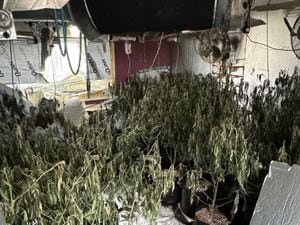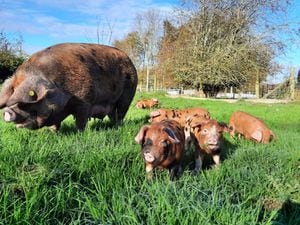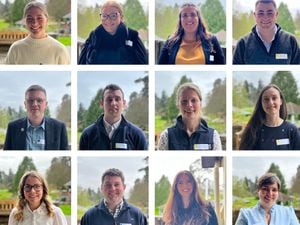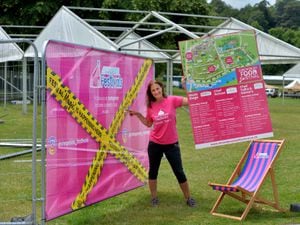Video and pictures: RAF Cosford Jaguars hit the road
They were once at the cutting edge of Britain's fighter defence, but now these aircraft have been reduced to queuing just like any other traffic.
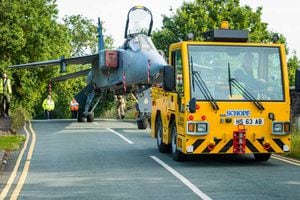
Ten Jaguar aircraft, based at RAF Cosford, were moved yesterday in a carefully planned operation.
Five aircraft were moved from the Aerosystems Engineer and Management Training School to the airfield, while another five Jaguars made the same journey in the opposite direction.
Squadron Leader Iain Gray, Officer Commanding, Aeronautical Systems Training Squadron, a squadron which is part of the Aerosystems Engineer and Management Training School, said the strategically planned operation was bought about to enable best use of training resources for the students at Cosford.
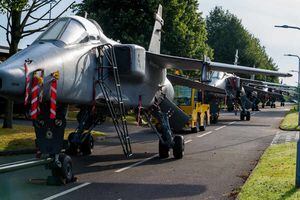

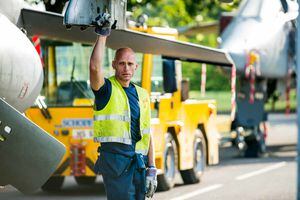
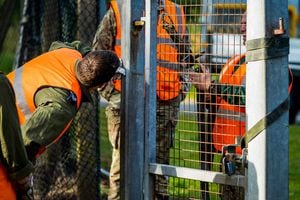
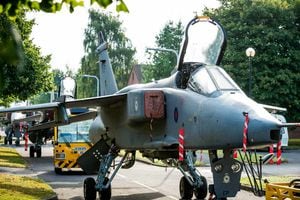
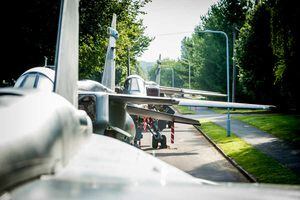

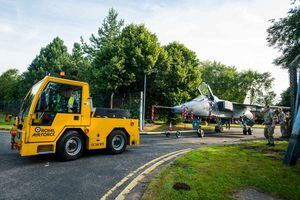
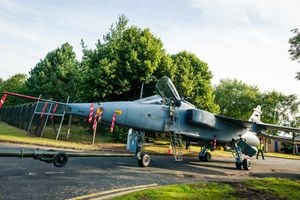
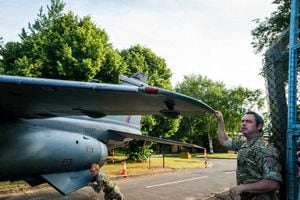
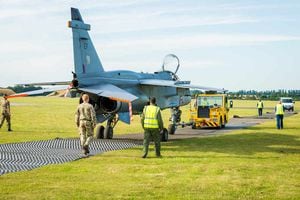
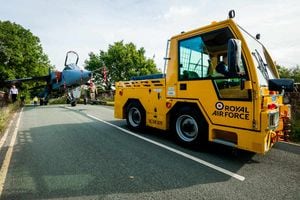
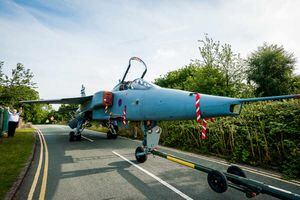
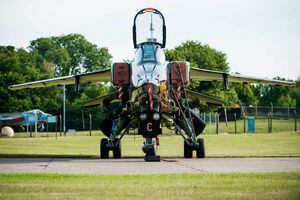
He said: "The decision to move 10 Jaguars between our two sites is primarily to ensure the right aircraft are available for training to our people.
"Five 'black' GR1/T2 Jaguars have been used as ground instructional airframes at Training Consolidation Flight and could often be seen by the public being towed across the airfield.
"Five other GR3 Jaguars, in standard decoration, were transported from the Mechanical Training Squadron here at Cosford's main site, to the airfield for training delivery including towing lessons.
"The older black Jaguars had lost their ability to taxi under their own power, the maintenance on them had become too much and ensuring our personnel's safety is paramount – therefore a solution was required.
"The newer grey-painted GR3 Jaguars are still viable and can provide the realistic training we need.
"However, these are always in demand for technical training, so the decision was made to get more of the grey Jaguars transferred from the main site and swapped with the older black Jags on the airfield."
A detailed and intricate plan of manoeuvre saw the GR3 Jaguars move first, through the West gate of the main site over the railway bridge onto Neachley Lane, which was closed for the morning to enable activity.

The Jaguar is a single-seat, twin-engined aircraft, with an unloaded weight of 7,550 pounds, a maximum speed of 1,050mph and an operational ceiling of 40,000 feet.
Its built-in armament consisted of twin 30-millimetre cannon, which could be augmented by missiles and bombs.
The Anglo-French Jaguar programme was started in the 1960s when the British needed a new supersonic jet trainer and the French wanted a dual-role trainer and light attack aircraft.
Deliveries of the Jaguar to Royal Air Force squadrons began in 1973.
The Jaguar was taken of out of service with the RAF in 2007 and the French Air Force in 2005.
The aircraft then had to negotiate the usually busy roads around the station, complete with potential obstructions such as lamp post and trees. Traffic management had been put into place to avoid any issues. This movement plan was reversed for transferring the black Jaguars from the airfield to the main site.
The Jaguar aircraft was originally commissioned in the early 1960s, but only came into service with the RAF in 1973.
They replaced the RAF's ageing fleet of the Folland Gnat T1 and Hawker Hunter T7.
The Jaguar saw active service during the latter stages of the Cold War and the first Gulf War, before being replaced by the Eurofighter Typhoon jet in 2007.
Apprentices from across Britain are sent to RAF Cosford to work on Jaguar fighter jets before being deployed on missions across the world.
The idea is that trainees receive live training which gives them a better idea of what working on the front line would be like.
The Shropshire airbase is the only place in the country where the decommissioned planes are used in such a hands-on fashion. Youngsters from the age of 16 are eligible to apply for an engineering apprenticeship. All of the air force's engineering apprentices learn their skills and all the safety aspects that come with handling such a technical and potentially dangerous piece of equipment.
The Jaguars arrived at Cosford about two years ago – and among the trainees' tasks are checking flight systems and being aware of the dangers of a moving a jet on an airfield.
The apprentices, who eventually go off to work on planes all over the world, learn all the safety aspects that come with such handling such a technical and potentially dangerous piece of equipment.
The base is also the only place in the country where the instructors are trained to "taxi" the planes about, which means actually climbing in the cockpits and moving them.
But a lot of the systems on the planes have been disabled, such as the extra fuel tankers that give the planes enough power to take off, and the ejector seats, which launch a person 150 metres in the air.

